The badass life of young Ken Stabler and the play that created the Snake legend

The following is excerpted from SNAKE by Mike Freeman. Copyright © 2016 by Mike Freeman. Used by permission of Dey Street Books, a division of Harper Collins. All rights reserved.
Stabler’s philosophy of living life to its fullest, and enjoying the ride, out of fear of becoming his father, actually began when he was in his early teens, when he started drinking beer. Stabler occasionally slipped out of his home on weekend nights to join friends. (It’s difficult to believe the controlling Slim didn’t know his son was escaping the home to go drink. It’s more likely Slim let Stabler go with them.) As Stabler became stronger and more athletic, his penchant for finding trouble also grew. On this night, Stabler and his friends went from Foley to Pensacola, Florida, a trip that took less than an hour to drive. They ran out of alcohol and money and had the idea to steal hubcaps off cars and sell them for cash. Stabler wasn’t the ringleader but he also wasn’t an innocent.
The police caught the group almost immediately. They were all too young to be arrested but not too young to be suspended from school for three days. The other hubcap pilferers weren’t athletes like Stabler. It was Stabler who suffered the most since he wouldn’t be allowed to play in a scheduled basketball tournament. Understandably, Stabler believed his father’s punishment would be extreme, and he imagined a violent Slim angrily punishing him. Instead, something completely different happened. Slim made a calm and fatherly speech to his son. “You can have a good athletic career ahead of you,” Slim said, “maybe even get yourself to college playing ball. But you get a reputation as a thief, you won’t get no chance. You’ve seen good athletes in high school not get scholarships because they couldn’t stay out of trouble. Colleges don’t take troublemakers. Now, you keep that in mind.”

Snake: The Legendary Life of Ken Stabler
by Mike Freeman
The first in-depth biography of pro football’s first bad boy, famed Oakland Raiders quarterback Ken Stabler.
That was the good and prescient Slim. He knew what his son was becoming. He also knew that Stabler, despite his infatuation with basketball and baseball, and the fact that Stabler still barely weighed 140 pounds as he entered high school (though he was over six feet), had a great chance of becoming a good football player. Slim began the earnest task of pushing Stabler toward that sport. The problem was, Stabler didn’t like playing it, and hadn’t played since he was eight years old. He hated the violence.
Stabler believed that nothing would change that view. It didn’t change even when Slim took him to a preseason game between the New York Titans and Houston Oilers, played in Houston on October 9, 1960, at Jeppesen Stadium. The head coach of the Titans was Sammy Baugh, a longtime quarterback and Hall of Famer. It was interesting that Stabler’s first game included Baugh, because eventually Stabler would become a more advanced version of him, an elusive and accurate passer. The other quarterback that game was George Blanda, who also had striking similarities to the Stabler to come. Blanda had retired in 1958 but two years later was back, joining the expansion Oilers and being ridiculed as a reject who couldn’t make the real league, the NFL.
After that game, Stabler got Blanda’s autograph. Stabler had no idea that just over a decade later, he would be holding for Blanda’s field goal tries when both were with the Raiders. In Stabler’s rookie year, 1970, he’d constantly and sincerely address Blanda as “sir.” They’d become close friends and golf buddies.
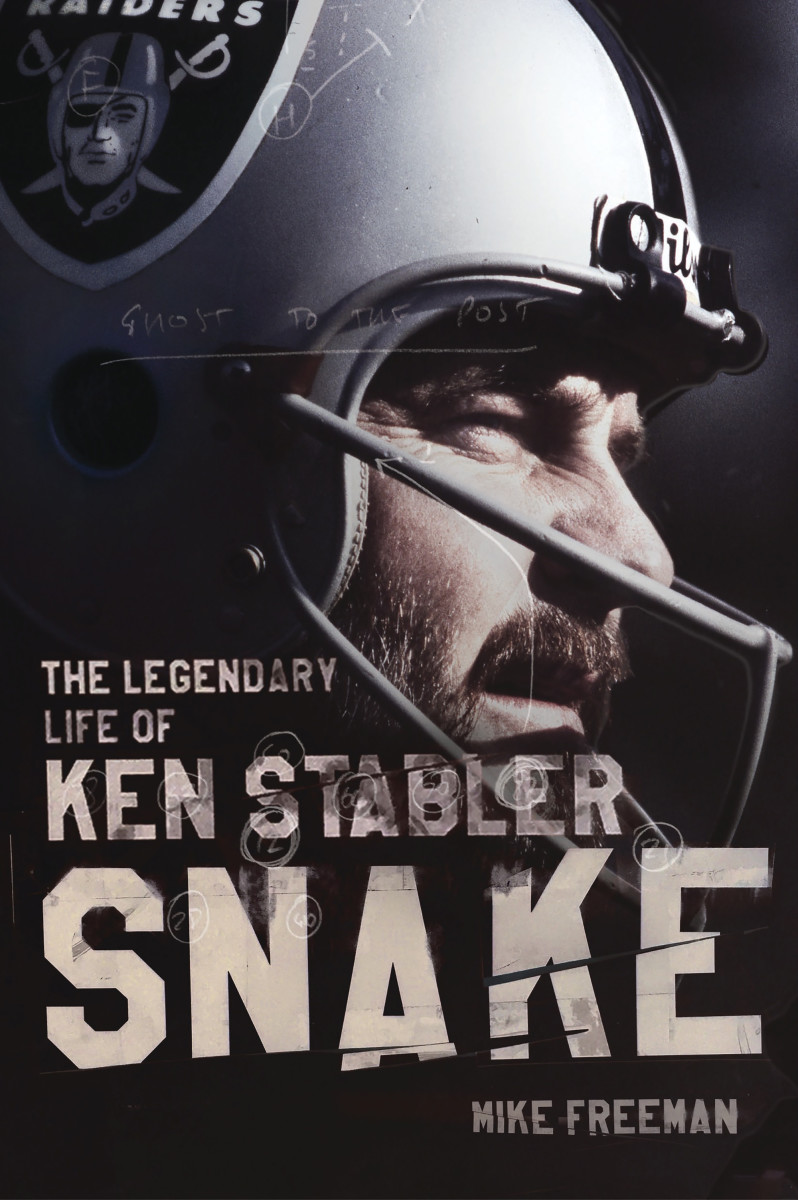
Despite his fun and autographs, Stabler still wasn’t sold on football. Slim changed that. He altered the destiny of Stabler and the NFL with a car—a black 1954 Ford. That car would change everything.
Stabler came home one night as his father was working on it. His father smiled when Stabler asked about it. The family didn’t have great wealth. The cars were the fruit of Slim’s hard work and his ability to rebuild the broken-down vehicles.
“It’s yours if you play football, Bud,” Slim said.
Stabler didn’t hesitate: “I’m going to be a real good football player, Dad.” And so it began.
SI Vault: Gettin' nowhere fast with the laid-back Raiders QB Kenny Stabler
How exactly he got the nickname is a slight mystery. Stabler always maintained that his coach Denzil Hollis exclaimed, “Damn, that boy runs like a snake,” as he watched Stabler dodge and weave on the field.
Hollis’s widow says what her husband actually said was more succinct. When Stabler came to the sideline after that run, Denzil, she says, simply remarked, “Good job, Snake.”
What’s not up for debate is how Hollis once described high school Snake: “Straight up from top to bottom, and when he turned sideways, he weren’t no thicker than a airmail letter.”
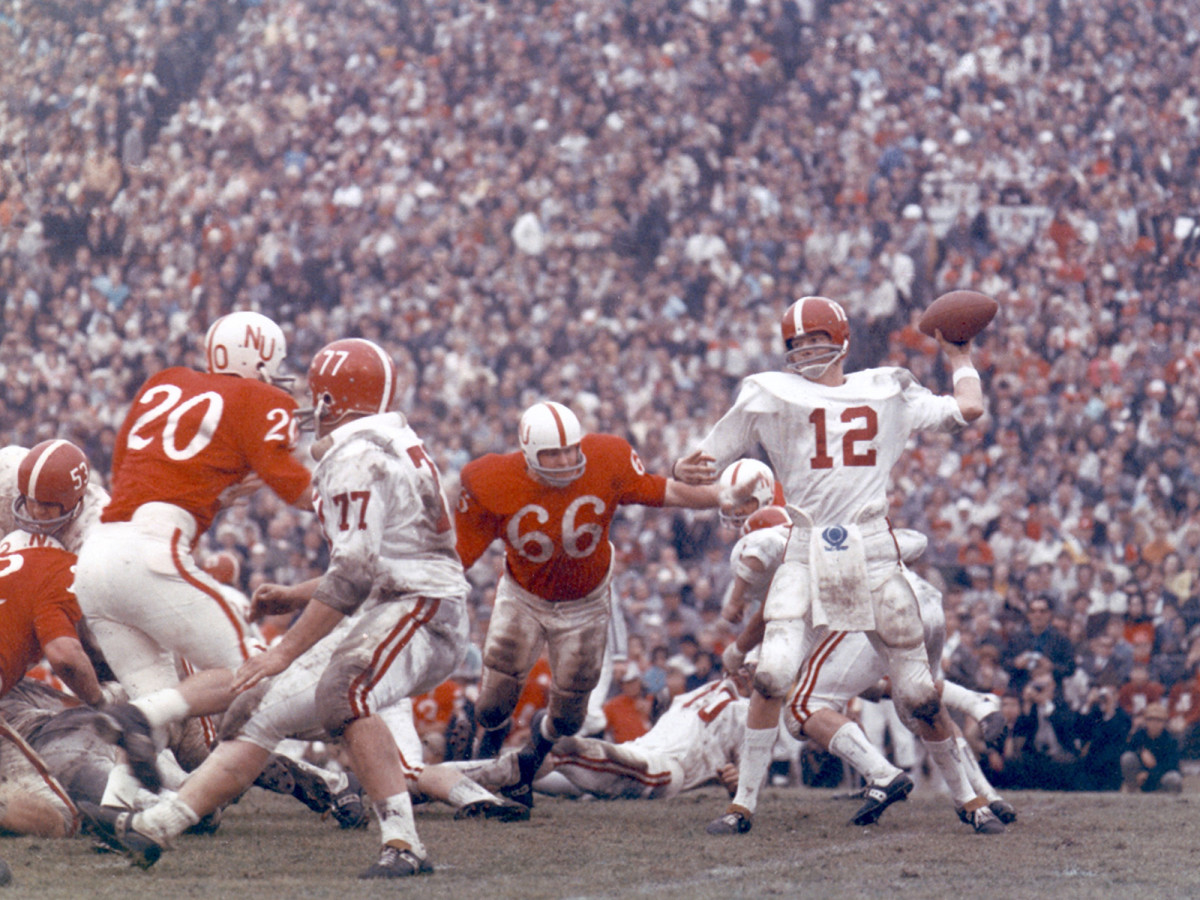
What also isn’t up for debate is the run itself. The play that created the Snake legend came on a dizzying punt return. Snake ran some 60 yards for a score, evading tacklers by cutting back and forth, from sideline to sideline, four times.
“He’d run two hundred yards to score from twenty yards out,” Hollis once recalled.
“Got the nickname from returning punts, of all things,” said Snake.
Hollis coached football, basketball, baseball, golf, and track at Foley High School, so he knew every type of athlete, which also meant he knew a special one when he saw it. Snake was that, and it was Hollis’s job to nurture that specialness. “I have tried to teach them to show class, to have pride, and to display character,” he once said.
Once Snake made varsity, Ivan Jones, one of the legends of Alabama high school football, coached him. From 1960 to 1964, Jones’s teams won 47 of 50 games. He never had a losing record, and Foley won despite being at a massive numbers disadvantage. Census records show the population of Foley in 1960 was just 2,889 people.
In high school, Snake threw the ball an average of just ten times a game. He was mostly a runner in a ground-and-pound offense, and he wasn’t necessarily fast. His 40-yard dash would not dazzle but Stabler possessed what one NFL coach once described as “swivel hips.” He was able to cut on a dime and that ability would only sharpen.
Snake also didn’t look the part of a shake-and-bake runner. He was tall and awkward and there was a sort of hitch in his run as he approached full speed. But when watching tape of Snake in high school or at Alabama, he is constantly outrunning and outmaneuvering defenders. One minute, a linebacker is about to make the tackle, and in the next, he’s gasping for air as Snake runs past. “When you’re a guy who is smart and is quick,” says Joe Namath, “that counts for a lot. He could make those quick cuts and fool guys.”
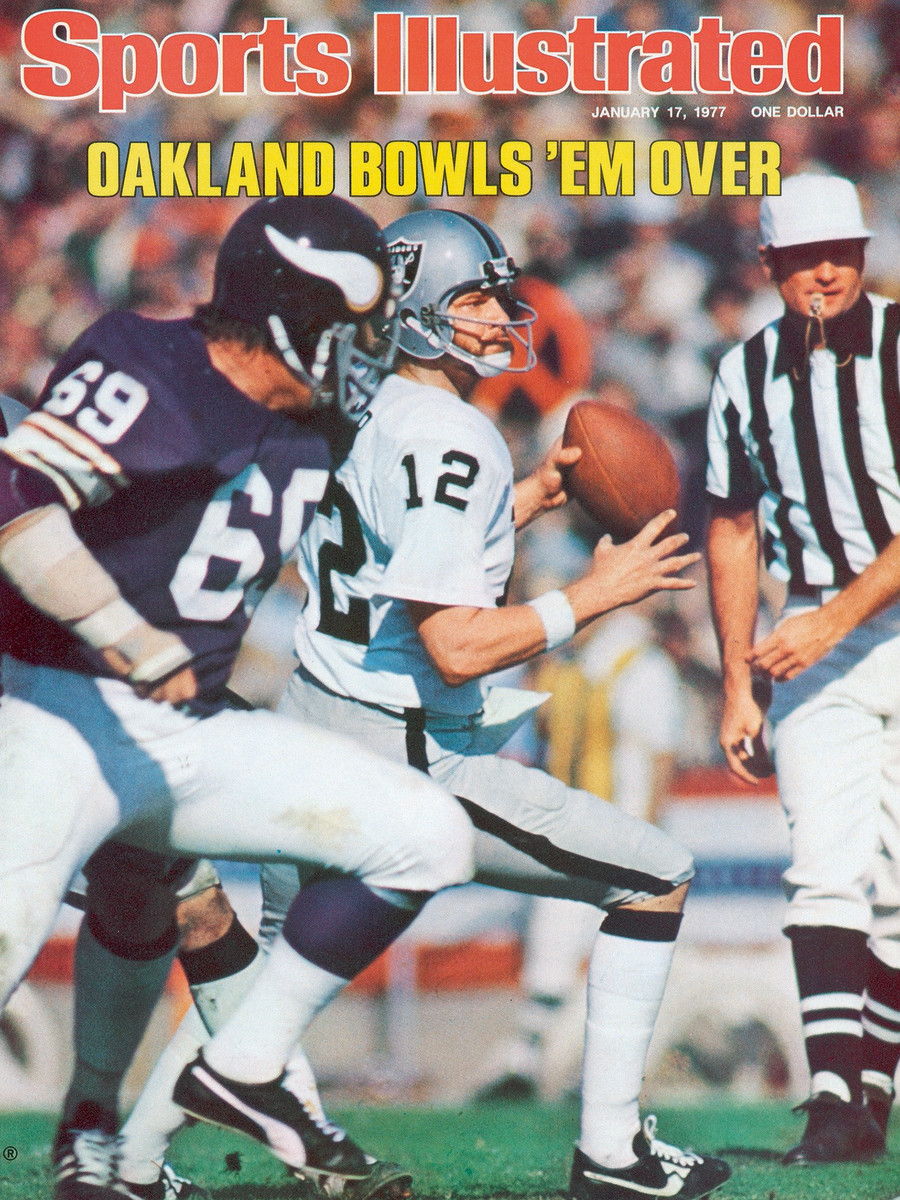
It was in Snake’s sophomore year in high school that his superpowers truly began to form. He was still playing baseball and basketball but football was where Snake was making his mark. There was also the rebellion. That sophomore season, Snake was fighting for the backup quarterback position. It was important because the one who captured the second-string position would most likely be the starter the following season. Snake decided he was going to get that backup job, even if he angered his coach in trying.
Snake’s team, as it often did, had a large lead at the end of the game, so Jones allowed Snake to play quarterback, and the player Snake was fighting to get the starting job, Jimmy Paul, was in the backfield. Because football was so important in Foley, and the town was so small, the players in the town were semi-celebrities. The Foley Onlooker, on October 4, 1962, took a picture of Snake and Paul after a game against the Alba Sharks, won by Foley, 37–0. Snake was wearing his number 12 jersey; his uniform was dirty and his ears protruded wildly because of a short haircut. “The unbeaten Lions traveled to Bayou La Batre to tangle with the Sharks of Alba on Friday,” the story read. “Halfback Wayne Chisenhall scored on a 52-yard run on the second play of the game. For the second touchdown Kenny Snake threw an 18-yard pass to end Ronnie Helton. Still in the first quarter, sophomore Norman Moore scored from 18 yards out. Snake threw his second touchdown pass of the night by hitting Jimmy Paul in the end zone. Late in the first half, Otis Reed scored from the six-yard line. The Lions’ last score was a seven-yard run from Reed in the third quarter. The Sharks never threatened.”
This brief would read like many others during Snake’s high school years. In one particular game, Snake had taken the offense into the red zone when Jones called for what was the core play for Foley and almost all of high school football then: the option play. The play was supposed to be Snake faking a handoff to Jimmy Paul but then keeping the football. Instead, Snake decided to change the play and hand the football off left to Paul. The problem for Snake in that play was that he turned the wrong way and the play blew up. The offense didn’t score.
Jones was angry. Beyond angry. Jones believed that Snake changed the play so he could purposely blow the handoff to Paul and Paul wouldn’t score. If Paul didn’t score, then he wouldn’t have a potential advantage over Snake in the fight for starting quarterback. The coach basically thought his quarterback was a saboteur. Snake wasn’t, and later, Jones would recognize this and apologize to Snake, cementing a closeness that would last for decades.
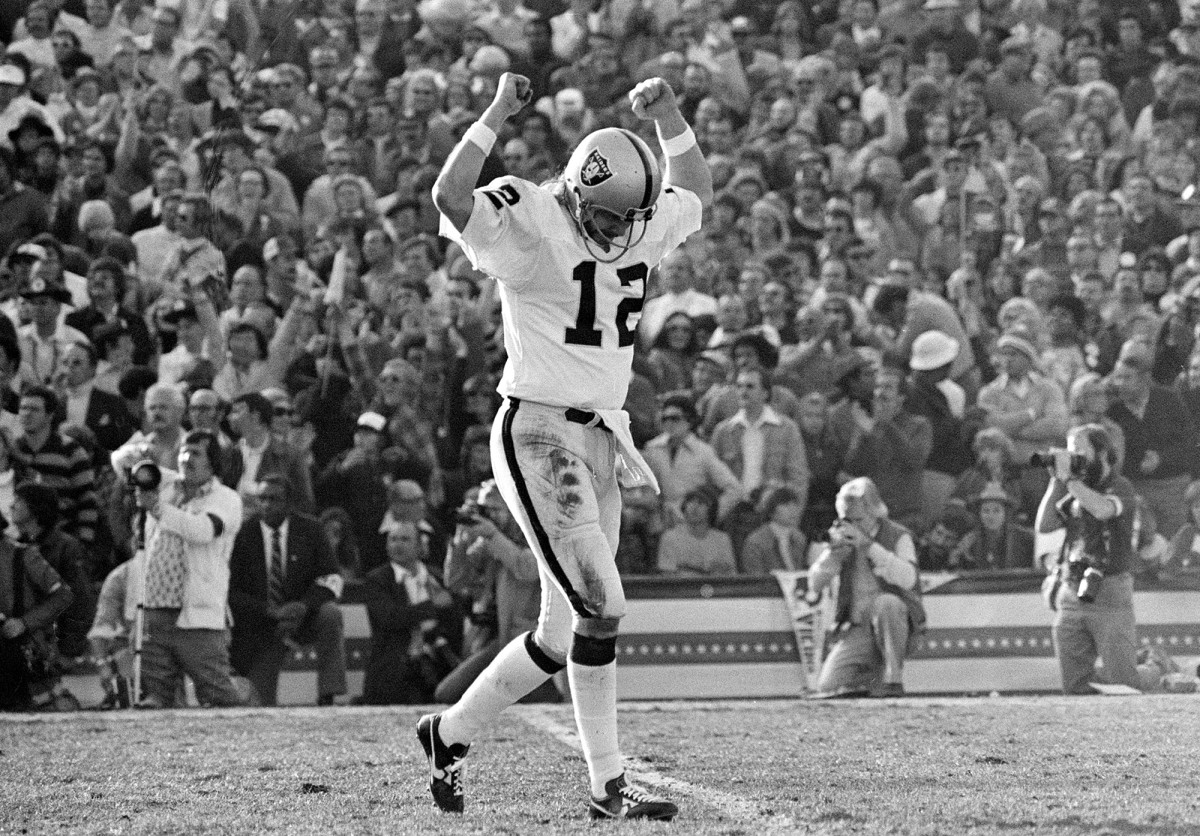
That doesn’t mean Snake didn’t test every inch of Jones’s patience. After the Ford given to Snake suffered engine failure, Slim gave his son another car: a 1963 Impala SuperSport. The car was gorgeous, one of the true pieces of automobile muscle at the time, sporting 250 horsepower, and new bumpers, hoods, rear deck contours, and accentuated side panels. It was gorgeous, as were some of the women Snake bedded in it. He describes one time taking “a girlfriend off for a little romancing before practice” and as a result of that encounter, Snake decided to skip practice. Snake thought Jones would be understanding.
The following day, Snake told his coach that he missed practice because he wasn’t feeling well. Jones didn’t believe him. The fact that Snake lied to Jones likely bothered Jones more than the missed practice. Snake should have known this. All the players knew that Jones was no-nonsense. Once, when Jones was upset with one of Snake’s teammates, believing the player wasn’t firing off his blocks with the necessary urgency, he stopped practice. The player was in full pads and Jones was wearing nothing but shorts and a shirt. Jones got down in a four-point stance. “Fire off. I want you to hit me like you would in a game!”
Jones was hit hard and knocked back about three feet. He calmly got up. “By God, that’s what I mean,” Jones said. “That’s what I want you to do every time.”
Jones told Snake they needed to talk in Jones’s office. As soon as they got inside, Jones closed the door. He turned to Snake: “Bend over and grab your ankles.”
Snake was momentarily stunned but the wannabe nonconformist complied. Jones hit Snake on the backside three times. Whap, whap, whap. “Next time,” Jones told Snake, “you get ten.”
The punishment didn’t hold, because Snake would get in trouble. Again. With the cops.
The Raiders' rabid fans finally have a team to get behind ... but for how long?
One of Snake’s close friends on the team was Otis Reed. Snake remembered Reed as one of the best pure athletes he ever played with. Reed remembers Snake as so talented that he didn’t need to practice.
“We ran around together,” Reed said. “His dad put us on restriction because we seemed to get in trouble a lot when we were together. Things would just happen.”
Things always happened. Sometimes Snake was the ringleader; sometimes it was Reed or someone else. On this night, it was a drunken Snake. He wanted retribution against the police who occasionally harassed his friend Reed. “Let’s get back at them for fucking with you,” said Snake.
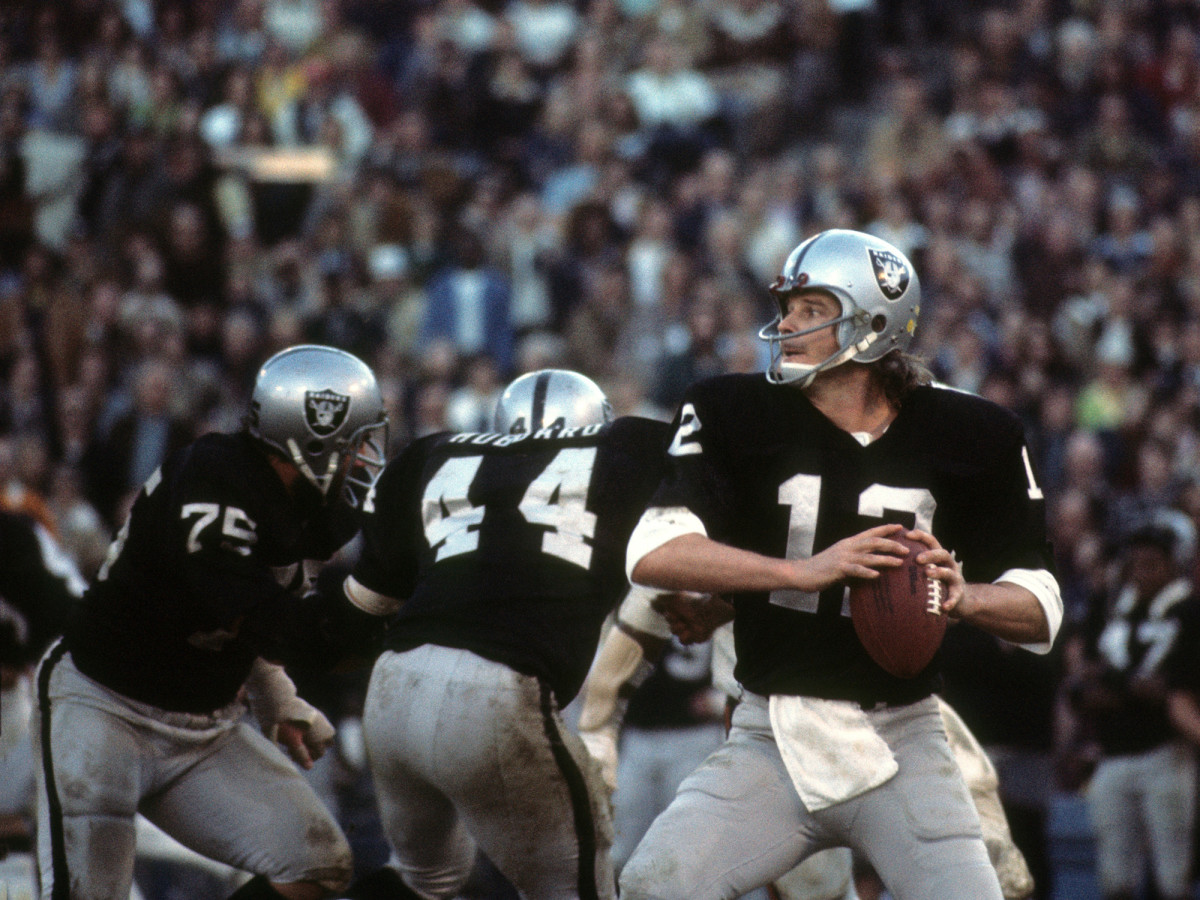
That wasn’t just the alcohol talking. Even then, loyalty was part of Snake’s core. The drinking was the spark, but it was Snake’s desire to have the back of his friend and teammate that was the engine. This would be a Snake trait throughout his football life, and up until his death. It’s why so many teammates and others always felt a great sense of closeness to him.
The revenge taken against the police was a simple act of childishness. Snake and Reed saw a random police car and jumped on its hood, denting it, and then Snake smashed the light on the top of the car as Reed kicked the windshield.
The next day, the police, knowing who may have been responsible, showed up at Snake’s school, asking the two teenagers questions. Both denied the incident, but the police did not give up. They went to the station, and the police chief brought the two to the damaged cruiser. “Take your shoes off,” the chief told them.
They complied and in a simple piece of police work, the shoes were matched to the dents on the police car’s hood. They were busted.
The damage to the vehicle was about four hundred dollars. Again, as when Snake got into trouble before, he expected some type of beating from Slim. Slim again surprised him. “Bud, I’m working just as hard as I can to take care of this family,” Slim told his son, “and you know it. I’m trying to pay off those cars, and now I have to pay for your foolishness, too. I sure ain’t got any four hundred dollars laying around. I can’t hardly believe you did such a dumb thing as bust up a police car. Damn, you disappoint me.”
Snake was devastated to see how hurt his father was. He redoubled his efforts on the football field, the quiet result being one of the most impressive high school football careers in Alabama history.
